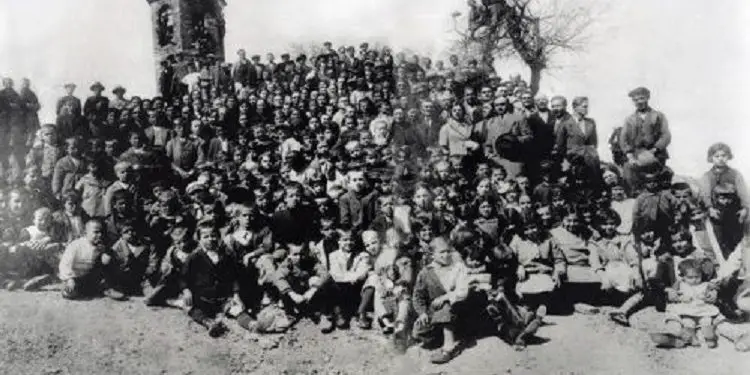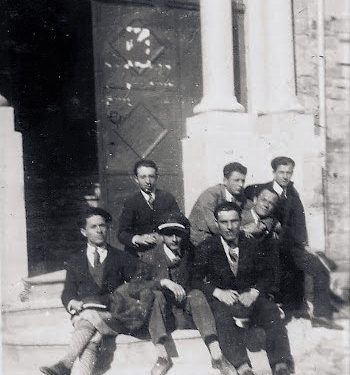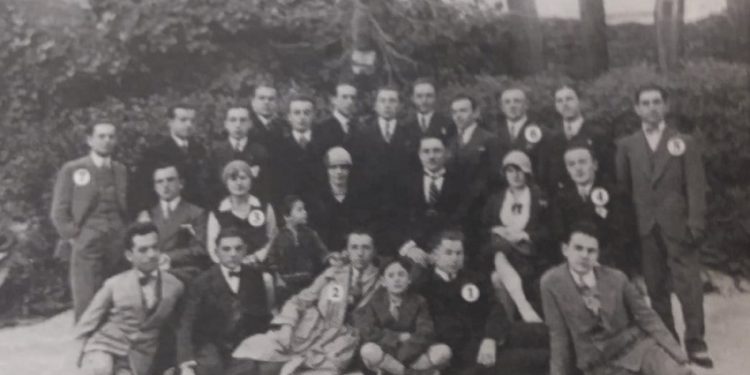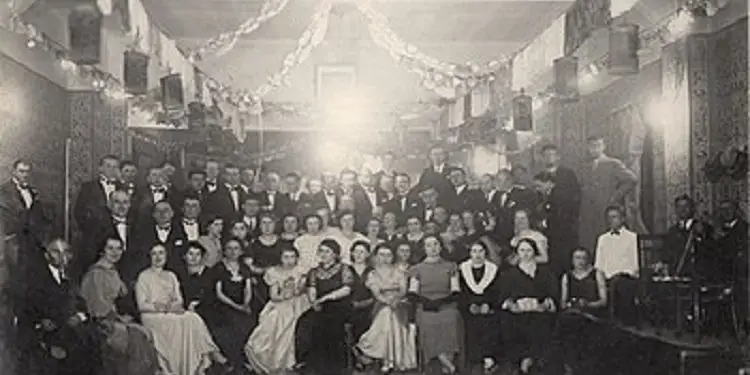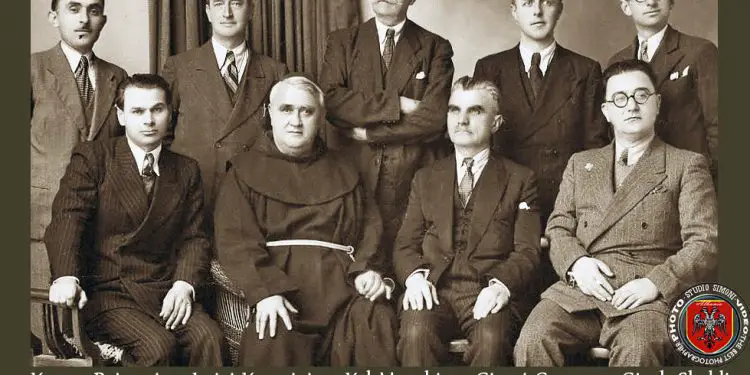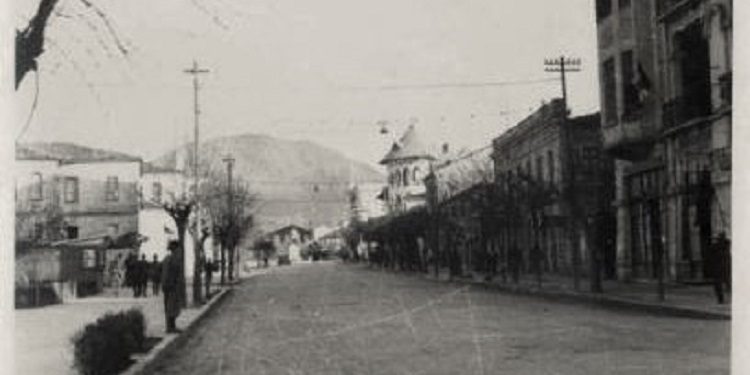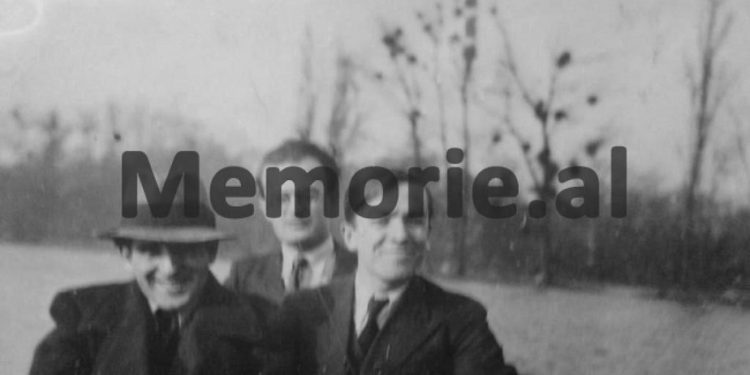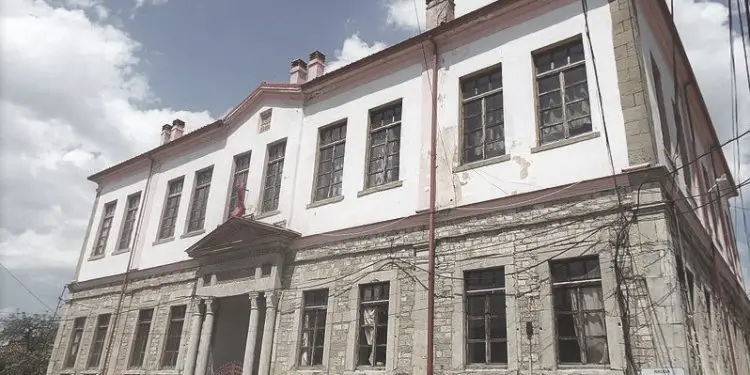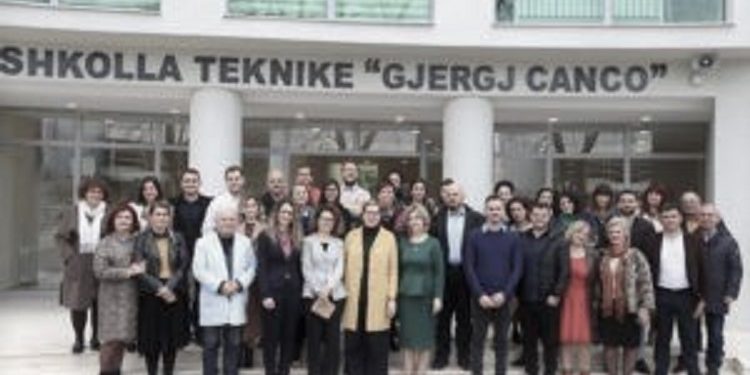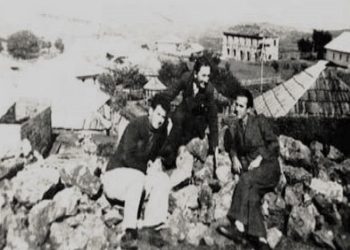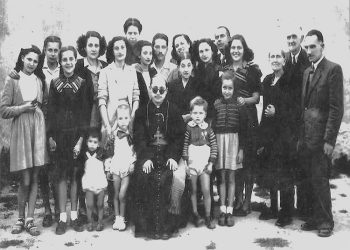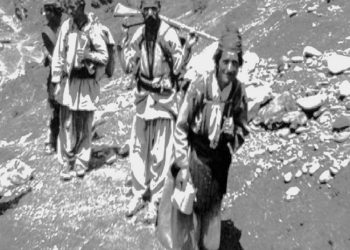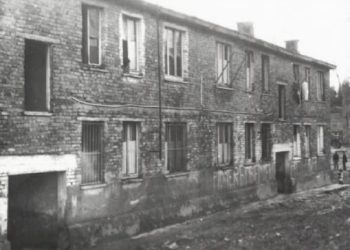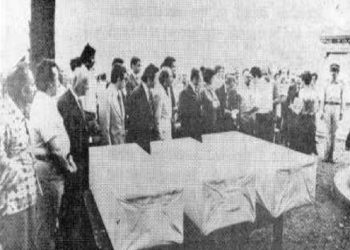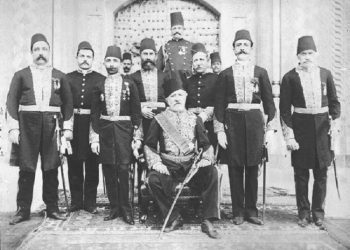Dashnor Kaloçi
Memorie.al/publishes the unknown story of Gjergji Canco, originally from the village of Boboshtica in Korça, who at a young age, when he was in school at the French Lyceum in that city, started publishing in the literary magazine ‘Shpresa’, of the school , as in prose, poetry, and various translations from French, such as Balzac, Lamartine, etc., but in 1927, he gained a right to study from the government of King Zog and went to France, where after studying for four years in the city of Montpellier in the ‘Fakulte des Sciences’ in the branch of Mathematics, in 1932 he returned to his homeland, where he was appointed professor of mathematics at the American Technical School in Tirana, led by Harry Fultz and later in the classical gymnasium of the city of Shkodra. Appointment of Canco as director of the Technical School (Polytechnic) immediately after the end of the War, where he served for 22 years until he retired in 1966, where for his great contribution to the spread of Albanian education and the management of the Polytechnic in Tirana, he was awarded the title ‘Teacher of the People’ and ‘Hero of Socialist Labor’, as well as a high school named after him for years in a high school in the center of the capital.
It was the month of July 1936, when Andrea Mazoni, the famous French scholar of Slavic languages, after crossing the ‘Adriatic’ with a small transport ship that he had booked in Bari, Italy, set off towards the city of Korça, where had heard of some villages speaking a language mixed with Slavic ones. Arriving in the beautiful city of Korça, which at that time was also called “Little Paris”, because of its beauty, Mazoni asked to be accompanied to the village of Boboshtica, where he would stay for about three months, for carried out his research and research work in relation to Slavic languages. One of the families, where the distant friend from France found unstinting support and help for his work, was the Canco family. That family, whose roots go back several centuries, would occupy a prominent place in one of Mazon’s books, which he published in France in 1936. A voluminous study, in which he describes only Boboshtica (the village) where he stayed close to three months), from ancient times, their origins, customs, customs, traditions and everything related to that village. Among other things, in Mazon’s book about Boboshtica, from Cancot, there would be Dhimitri (Canco), who was born in 1814 and died on October 7, 1904.
Dhimitri, the famous man of Boboshtica
Dhimitër Canco, who had studied at the Lyceum of Constantinople one of the most famous of the time, returned to his native village when he was 30 years old and stayed there until his death at the age of 90, serving as a teacher in that village. for nearly half a century. In his youth, Dhimitri had immigrated for several years to Romania, where he had stayed in the city of Pitesh, near Bucharest, a place where the first Albanian emigrants who came from the remote village of Boboshtica in Korça in the 1820s were settled. ‘30, which formed the first Albanian colony of Romania. Demetrius was a very lively man with a great authority that was respected by all his fellow villagers and he spoke several foreign languages such as: French, Slavic, Romanian, Greek, etc. A few years later, after Dhimitr’s death in 1904, as if to respect the family tradition, one of his nephews (nephew) Gjergji would make his will to become a “dhaskal” a reality.
Canco, one of the first students in Montpellier
Gjergji was born two years later after the death of his uncle, in 1906 (April 21) and after finishing primary school in his village, he would enroll in the French Lyceum of Korça, which he graduated with honors in year 1926-’27. From a young age when he was in school, Gjergji was passionate about literature and he began to publish in the school literary magazines, which were published and published by the students themselves, such as the magazine “Hope” in the Lyceum of Korca. In addition to several articles in prose and poetry, in the 17 consecutive issues of this magazine, Gjergji published various translations from French that he had learned perfectly, such as Balzac, Lamartine, etc., when he was not yet 17 years old. After graduating from high school, Gjergji was in the group of those students who would go to study at French universities, who were also the first group from Albania to leave for studies.
Memoirs of George Cancos
In this regard, in his diary entries, Gjergji described the time when he would leave Korça for France, where he writes, among other things: “With a small wooden suitcase, I am leaving for a country that knows the language, I know the monuments and museums, I know the history of that place, but what scares me is what results I will have there. I had a scholarship to study there, in France, with a passport bearing the number 3474. We arrived in Paris, it is night. All the Albanian students who were traveling had a strong tremor and at times I remembered the words of a professor from the Lyceum of Korça, who gave us the literature: ‘Dear students, be careful that Paris has a strong light, try to face with patience and perseverance ‘. At the Albanian embassy in Paris, her secretary received us and after welcoming us, she addressed me in a serious tone: Canco, for mathematics in Montpellier. The trip to Montpellier made a big impression on me. People on the train spoke slowly and were very respectful of each other. In the city I met the Tashko family, who after hosting me and welcoming me, recommended me a house nearby to live. A loving and respected woman lived alone in that house. After we made the presentation, he addressed me with these words: ‘My son, you are starting a difficult college, but you who have a French father, you will succeed’. I smiled and addressed her: Dear lady, I come from Albania and my father is from Boboshtica, while my grandfather has stayed in this village for more than 50 years. Near the village where I lived, there is a town called Korça and there in 1921, the French Lyceum was opened for the first time in 1921. I with a lot of perseverance learned a lot that I had been left without a mother. So to live, my father immigrated to Romania, and I lived with an aunt, whom I called my mother. When I was in my last year of high school, I told my father, who had just arrived from Romania, that I had hoped to go to study in France, as I was one of the top five high school students. My father put his hand on my shoulder and said to me with a smile: My son, France is far away for both me and you. These words came to my mind now in Montpellier, and gave me the strength to face what lay ahead. I was sitting for a coffee in one of the town bars. I had emotions, because the next day I would compete to start my studies for the ‘Fakulte des Sciences’ branch Mathematics. Emotions kept coming. As I was getting up, a friend told me, ‘Everything will go well, we will be students soon.’ And so it happened, my wish came true and I started the university year. The years passed one after the other, and without realizing it I felt like a graduate. And today in this city that welcomed us with love and kept us for this whole period, we all gathered to celebrate with our college friends, this important event in life. I graduated and now they are waiting for me to teach math. in one of the newly opened schools in Albania. I was happy to be coming home to say goodbye to that woman who was old for years but had something left over from her youth. “To that state and city that I did not know where they were on the map,” the lady of the house tells me, “now there is a graduate of a French school. I wish my son a successful intellectual life in education and on my part, on this occasion to donate these mathematical books, which I inherited from my husband. So I broke up with the French lady and came to Paris… ”!
From Paris to Tirana
“It was 1932; Tirana did not exceed 20,000 inhabitants. I went to buy newspapers at the Argus Bookstore, one of the few bookstores in the city. I see that in this bookstore there were many more books and newspapers in French than I thought. I was particularly impressed by the book of the famous French archaeologist Leon Rey, entitled ‘Guide De L’Albanie’, which was published in Paris in 1930. The first days in Albania passed slowly and I was still not acclimatized to the rhythm of Albanian life. I still remember the portrait of the Durrës customs officer, who still did not understand what was in the box that made that melodious voice. For this I told him it was called a gramophone. His portrait with a mustache up to his ears took on a slightly strange look when he asked me in a benevolent voice: ‘Okay, sir, but where does this gramophone come from’, emphasizing this word, as if he had known it for a long time. Far, far away, I answered immediately and for a moment I thought as far as we are…!? ”
Harry Fultz: Canco, come teach
Gjergji Cancos, would receive a letter from the American director of the Technical School in Tirana, Harry Fultz, who wrote, among other things: “We will be satisfied, if during this year, students will receive a clear idea on projections of points, lines and surfaces (planes). You have plenty of time to give students an idea and knowledge that they need and you can share your time, so there can be a balance between theoretical discourses, evidence and practical problems that will take place in drawing boards”. After reading the letter in one breath, Canco would respond positively to a request made by the director of the Technical School, Harry Fultz, which had been established by the American Red Cross since 1921, as a gift from the damage it had suffered. Albania from the First World War. In that school, Canco served teaching until 1936, when with a transfer order decreed by King Zog, he was asked to go to teach at the state gymnasium in Shkodra.
22 years, director of the Technical School in Tirana
At the end of the War in 1944, Canco was called to Tirana and appointed director of the Technical School, the place where years ago after returning from France, he was appointed for the first time as a mathematics teacher, at the request of the American director, Harry Fultz, whose place he would already hold himself. Regarding this, among other things in his memoirs, Canco wrote: “Hundreds of students left our school every year, which managed to have 1,500 students a year. After that, the conditions were created for different branches of the Polytechnic to be separated from our school and for three separate Technical Schools to be formed, such as the Agricultural Technical School of Kavaja, the Petroleum School in Kuçova and the “8 Nëndori” Construction in Tirana. Later, the Technical School ‘Geology Mining’ of Prrenjas and the Technical School of ‘Agricultural Mechanics of Durrës’ were established.
In 1966, Canco retires
In 1966, Canco retired, but again he could not detach himself from his passion, mathematics, which he continued to teach in foreign languages at the school of Foreign Languages ”Asim Vokshi”, in Tirana. Gjergji, had a special respect for the excellent students he had had over the years, whose names he had written in a special frame that he kept hanging in his house, which even today after so many years he keeps with special care, the son, Zhani Canco, the renowned architect who studied in Romania in the late 1950s. In the names of the excellent pre-war students, Canco has written: Avni Skrapar, Qazim Turdiu, Naim Shashaj, Xhemal Mamin, Petrit Radovicka, Zija Këlliçi, Skënder Çarçani, Hajredin Kumbaron and Zija Shkodra. In the post-war list, among them are listed: Eduart Starova, Hajri Mezini, Farudin Hoxha, Kujtim Dakli, Fotaq Diamanti, Llambi Blido, Shane Korbeci etc. For the great contribution that Gjergj Canco gave to the spread of education in Albania as well as to the management of the Polytechnic in Tirana, before the ’90s, he was awarded the title “Teacher of the People” and “Hero of Socialist Labor”. Unfortunately, Gjergji Canco did not live more than five years after retiring after he passed away on August 22, 1971, but he is remembered and continues to be remembered with respect by his former students, for his special passion and the rare dedication to his teaching mission. Likewise, even after the ’90s, the figure and contribution of Gjergji Canco in the spread of education and the management of the Technical School in Tirana is not only not forgotten, but he has been appreciated and his name for more than two decades , holds one of the high schools (Technical-Electrical School), located in the center of the capital. /Memorie.al




